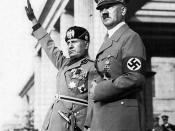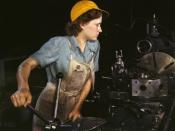Women in the Wars
On the outbreak of World war One a campaign was organised to encourage British women to become involved in the War Effort. Women began working in mills, factories, hospitals and schools.
The number of women working in one munitions factory increased from 125 to 25000, and women workers in government factories increased by three times. The government produced films about women in munitions factories that focused mainly on safety. This was to assure women that they would be safe whilst working in such places. They also made propaganda films urging employers to change their attitudes towards women workers. This is because many women were needed to adopt the jobs and roles of the men who had gone away to war. There was an increase in the provision of childcare, as more women went out to work. However, trade unions insisted that women should only replace men during the War, and afterwards many women lost their jobs.
Respect for women had considerably increased, and many people of both genders now saw them as "Protectors of the nation's Future".
Due to changing attitudes to women in British society, and fierce campaigning from groups such as the Suffragettes, women over thirty were given the vote after the First World War. However, many important men still resented women getting the vote, so there was a minimum age for women voters (30) so there would always be more men voting than women.
After the First World War, much emphasis was put on the role of women in the home by the Government. They made films which taught women how to look after their husbands and children, cook and clean. They were attempting to appeal to British women's patriotism by making the role of the home-maker appear important to the...


